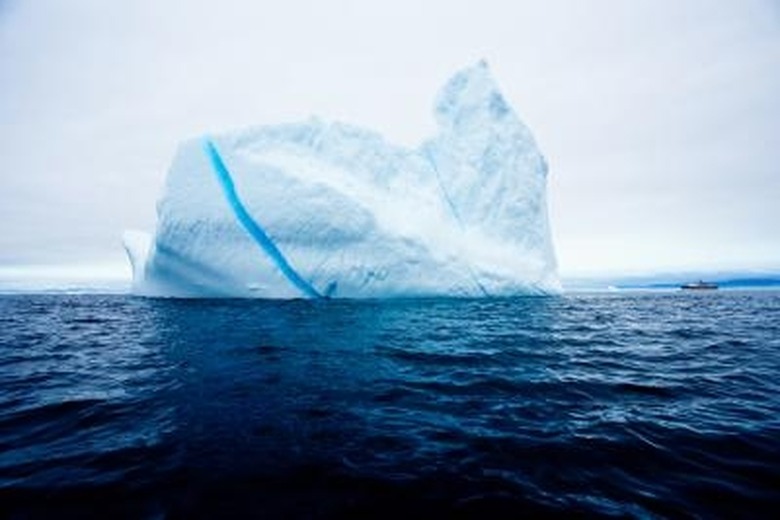How Does Salt Melt Ice?
Freezing
The freezing point of water is 0 degrees Centigrade (32 degrees Fahrenheit). More accurately, 0 degrees is the point at which water is melting at the same rate it is freezing, creating a balance. At 0 degrees, water molecules are moving very slowly, and a solid begins to form out of the water, which is ice.
How Does Salt Affect the Ice?
How Does Salt Affect the Ice?
When the water has reached an equilibrium at 0 degrees, the ice, undisturbed, will remain ice. If any foreign substance is added to the ice like salt, the water molecules can't attach to form ice as quickly, and so the freezing point (or ice formation rate) is lowered, while the melting rate is unaffected. So ice is forming less quickly, with the salt disturbing the process, and melting is continuing. Because of the lower freezing point, the rate of melting has continued, while the rate of freezing has slowed. So water begins melting before it can form more ice.
Salt is Not the Only Solution
Salt is Not the Only Solution
Any foreign substance can disturb the equilibrium of melting and freezing water molecules at 0 degrees Centigrade. Alcohol and sugar, among many other common substances, will have the same affect. Salt is used to help melt ice on roadways because it is cheap and abundant.
Cite This Article
MLA
Johnson, Juliet Myfanwy. "How Does Salt Melt Ice?" sciencing.com, https://www.sciencing.com/salt-melt-ice-4923144/. 24 April 2017.
APA
Johnson, Juliet Myfanwy. (2017, April 24). How Does Salt Melt Ice?. sciencing.com. Retrieved from https://www.sciencing.com/salt-melt-ice-4923144/
Chicago
Johnson, Juliet Myfanwy. How Does Salt Melt Ice? last modified March 24, 2022. https://www.sciencing.com/salt-melt-ice-4923144/
